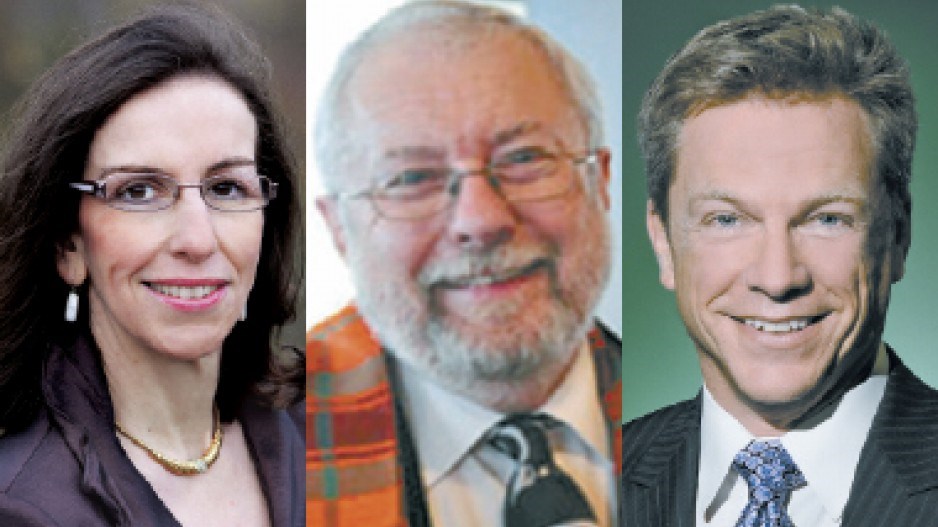Ann Gibbon: Founder and principal, Ann Gibbon Communications
Recently we've seen eye-popping gaffes among some of our leaders, from Chip Wilson's suggestions his Lululemon gear isn't suitable for plus-sized women to Toronto city hall's ongoing Ford fiasco.
If you're advising a leader in hot water, first assemble main decision-makers who may take part in handling the issue, such as legal, HR, frontline employees and PR.
Then, ensure this group knows everything about the issue. This requires full disclosure. Every skeleton comes out of the closet, even that last "coat hanger," as Toronto mayor Rob Ford termed his secrets. You can't make good decisions without all the information.
If the breach is serious enough to warrant an apology (and not all are), have the leader make it sincerely, quickly and cleanly, before things get worse. But first, clarify:
- what your leader is apologizing for.
- who your leader is apologizing to.
Ford and Wilson offer lessons on both fronts.
After police said they had a video of the mayor allegedly smoking crack, Ford issued a vague apology for "mistakes." Crack use wasn't mentioned. More apologies flowed as other revelations emerged.
As for Wilson, after his notorious "thighs" comments on Bloomberg TV, he issued a YouTube apology. Oddly, it was directed at his employees for having to deal with angry customers. His apology invalidated complaints and further frustrated his clientele.
Leaders embroiled in an issue should stick to a script, which should include what they'll do to fix things.
Sometimes, leaders can help recoup goodwill by putting their money where their mouth is. Give to a charity. Offer clients a discount. It could buffer cynicism about what seems to have become the Apology Industry.
Finally, know when to get out of the spotlight, back to business and on with showing your stakeholders the mistake won't happen again.
Don MacLachlan: President, Clarity Communications
The No-Person.
Every leader needs one – and needs to listen when he or she says no.
The loyal and trusted No-Person offers advice when the boss is falling off the leadership rails or is proposing to put both feet in the mouth in public.
Who badly needed to heed a No-Person? Toronto's Rob Ford, Lululemon's Chip Wilson, Justin Trudeau (on China's dictatorship, and on marijuana).
First, the No-Person needs to ask him or herself: Am I sure I'm right on the issue? What is my reasoning? Do I have all the information I need? Do I understand my leader's perspective?
Should I explore things with the boss a little more? "I can sure see why you'd want do this, boss. What do you see as the best way to go? Why so?"
Then – in private – you say No (or at least Whoa!) and make your pitch: illustrate what you are proposing and why. Talk about the potential consequences of not following your advice. If you can, give the boss some options – and some room to move.
If the boss has already fumbled a PR ball in public, help to minimize damage. The prime rules of crisis communications still apply:
- If there is bad news, admit your error, apologize and explain what you're doing to set things right.
- Anticipate negative questions, have your replies ready, and stick to your messages.
- Remember that no reporter can force you to say something you don't want to say.
Finally, remember this: You would not turn to your PR person for legal advice. Don't turn to a corporate or government lawyer for PR advice.
Michael Davis: Partner, Reputations
The PR disaster that is Rob Ford is a failure of leadership. There are lessons in this wreck, relevant to business, if we want to learn.
Ford has destroyed his reputation by destroying our trust. He has lied, broken social mores around drugs and alcohol and betrayed the trust of the electorate. We lost respect when he lost control and became a laughingstock. This fiasco is stunning in scope and crudeness – but business leaders have had their share of scandals.
Who can forget Ken Lay, CEO of Enron, and his creative bookkeeping that left shareholders $11 billion poorer when Enron went bankrupt? Or Martha Stewart, whose cooking talents were not restricted to the kitchen? Found guilty of conspiracy and lying to investigators, among other things, Stewart got five months in prison.
Ford shows business how not to deal with a crisis. Do not allow the story to come out over a long period of time, each revelation more shocking than the last. Each will be reported, analyzed and dissected by columnists. Shorten the exposure: get the story out – all of it. Apologize and formulate ways to fix it. Mess up, fess up, dress up.
Work hard not to change the story over time. When Gawker ran the crack story on May 16, Ford's denial was emphatic and repeated. On October 31 Toronto police reported there was a video. On November 5, Ford said, "Yes, I have smoked crack cocaine." Each change makes rebuilding trust more difficult and further destroys reputation. Holding back will only magnify the crisis.
And if the leader's reputation is so badly damaged that it is bleeding into the organizations, the board must move decisively to replace the leader.
The lessons from the Ford fiasco are clear if we want to see them. Don't hope the issue – or the media – will simply go away. Be truthful with your advisers; tackle the tough issues head on. Sincerely apologize, and then lay out the plan to restore trust and respect.




